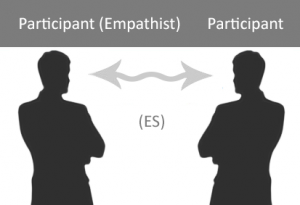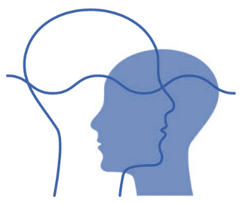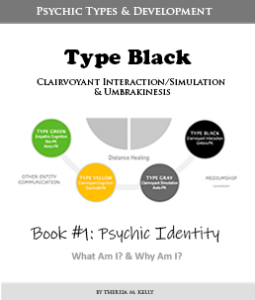- What Am I? (Type Blue)
- Psychic “Ability” (Type Blue)
- Psi, ESP, & Clairvoyance (Type Blue)
- Dreams, Impressions, & Hallucinations (Type Blue)
- Empathic Simulation (Type Blue)
EMPATHIC SIMULATION
The two main types of extrasensory perception talked about before, telepathy and clairvoyance, may seem somewhat similar too, but are actually quite different. Telepathy involves a connection and influence between two minds, while clairvoyance involves a connection and influence between the state of a physical object, person, or situation to a mind. This means that nature, or the universe, as a whole is always aware of the physical state of affairs, which in turn communicates such information to a mind. It helps if you think of the universe as one big computer or living brain that is aware, can think, and can form memories.
This difference between telepathy and clairvoyance is taken to be a difference between two forms of experiences. The goal of telepathic experiences is assumed to involve a person’s thoughts or mental states (example: how a person feels, thinks). In contrast, the goal of clairvoyant experiences is assumed to involve a physical situation or event that may or may not include other people.
This is viewed as telepathy being “direct,” since it involves a direct connection between two minds; whereas clairvoyance is viewed as “indirect,” because it only results in finding out about the physical situation of a thing or person, rather than directly finding out about a person through the person them self.
There are three sub-types of Psychic Empathy:
- Empathic Cognition (EC) applies whenever emotional information only is clairvoyantly received by the experiencer from an environment/situation, involving a group of people.
- Empathic Interaction (EI) applies whenever emotional information only is telepathically received by another person originating from the experiencer.
- Empathic Simulation (ES) applies emotional information only is shared between the experiencer and another person.
 The main feature of Empathic Simulation is a case in which a person’s emotional state appears to directly create a same or similar emotional state in someone else without the involvement of the five senses.
The main feature of Empathic Simulation is a case in which a person’s emotional state appears to directly create a same or similar emotional state in someone else without the involvement of the five senses.
Empathic simulation appears to involve that of the experiencer’s emotional state creating a same or similar emotional state in another person, OR the experiencer creating another person’s emotional state in themselves.
 Through this type of tele-empathy, the other person or people do not empathetically “know” the emotional state of the experiencer or other people involved in the simulation, nor is the emotional state impressed.
Through this type of tele-empathy, the other person or people do not empathetically “know” the emotional state of the experiencer or other people involved in the simulation, nor is the emotional state impressed.
Rather, it appears that the emotional state of the experiencer and other person or people simply become nearly or exactly the same, like an emotional mirror.
The identicalness of the emotional state is not known for certain, as there is no scientific evidence to support this at this time. However, reports relating to this from of tele-empathy suggest exact or nearly exact emotional states.
 Empathic simulation also appears to be less forceful than empathic interaction, as the other person or people are usually unaware, or do not “know”, that the emotional state is “not their own” as it is more gentle and natural feeling than empathic interaction.
Empathic simulation also appears to be less forceful than empathic interaction, as the other person or people are usually unaware, or do not “know”, that the emotional state is “not their own” as it is more gentle and natural feeling than empathic interaction.
The skilled experiencer will however be able to identify that the simulated emotional state originated from him/her own emotional state if the experiencer knowingly shared the emotional state with the other person or people.
 In other words, the experiencer can share his/her own current emotional state with other people, or the experiencer can start the sharing process of other people’s current emotional states to replace his/her own current emotional state.
In other words, the experiencer can share his/her own current emotional state with other people, or the experiencer can start the sharing process of other people’s current emotional states to replace his/her own current emotional state.
In the end, I think the best way to view empathic simulation is as though an emotional state belonging to one person is shared by way of an exact communication onto another person.








